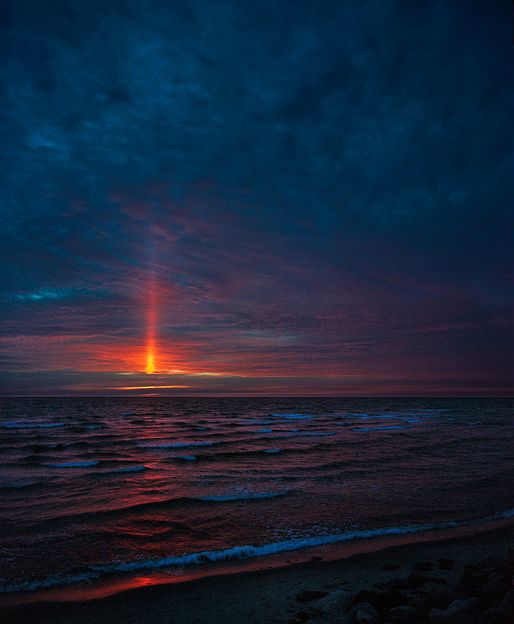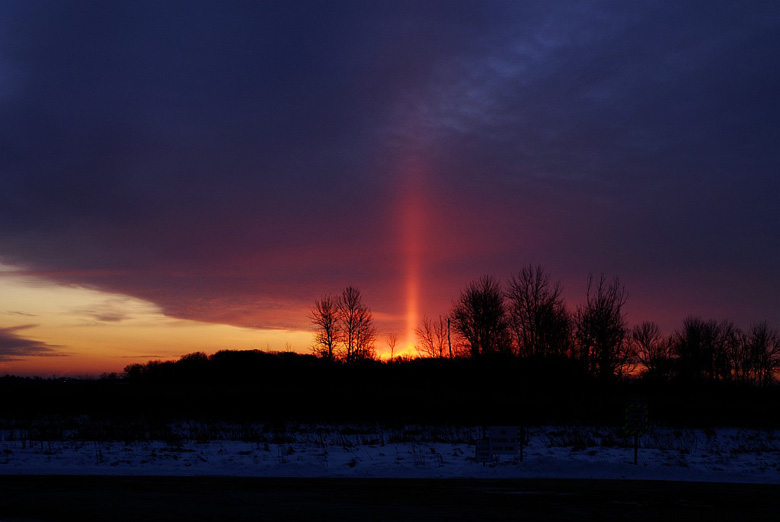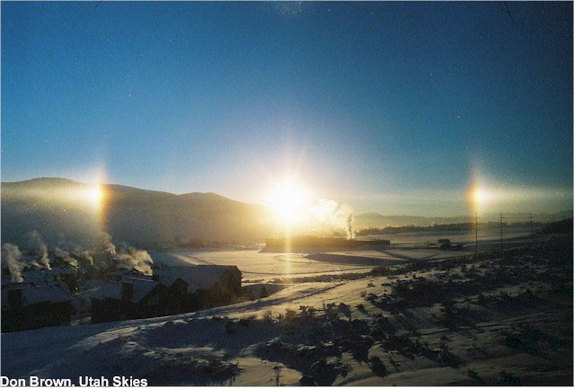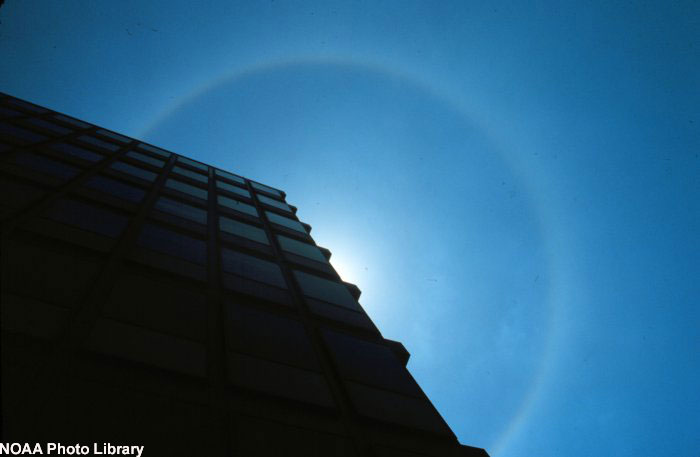Gallery: Our Amazing Sun
Solar Pillar

This photo, taken on May 21, 2010, at Nødebohuse, North Zealand, in Denmark, shows a solar phenomenon referred to as a solar pillar. A solar pillar is usually created in cold air by ice crystals falling from high clouds. The crystals are sometimes flat, and air resistance will cause them to float flatly, rather than knifing downward on edge.
Sunlight reflects off the crystals to generate what appears to be a column of light shining up into the sky like a beam. The pillar seems like it comes from the sun, but in reality it's just a few miles away from the observer.
Shining Beacon

This colorful solar pillar occurred around sunrise on Wednesday, Jan. 23, 2008, in Chicago, Ill. Since solar pillars are an extremely cold weather phenomenon, they are most commonly seen in the arctic.
Sundogs

A sundog is another atmospheric optical phenomenon caused by the refraction of sunlight by tiny ice crystals in clouds. Also known as "mock" suns or parhelia, sundogs appear on each side of the sun. The ice crystals must be preferentially oriented horizontally and the observer's line of sight must be close to horizontal in order to see the sundogs.
This beautiful picture was captured at sunrise on a cold and still morning in Park City, Utah. Above the Trans-Alaska Pipeline in midwinter, sundogs meld into a halo around the sun.
Solar Halo

Solar halos are also caused by small, flat, six-sided, ice crystals that float down parallel to the ground. When an observer passes through the same plane as many of the falling ice crystals near sunrise or sunset, the alignment makes each crystal act like a miniature lens. These "lenses" refract sunlight into our view and create what appears to be a bright circle around the sun.
Shown above is a photo of the sun peeking from behind a building, with a 22-degree solar halo arc shining around it.
Sign up for the Live Science daily newsletter now
Get the world’s most fascinating discoveries delivered straight to your inbox.









